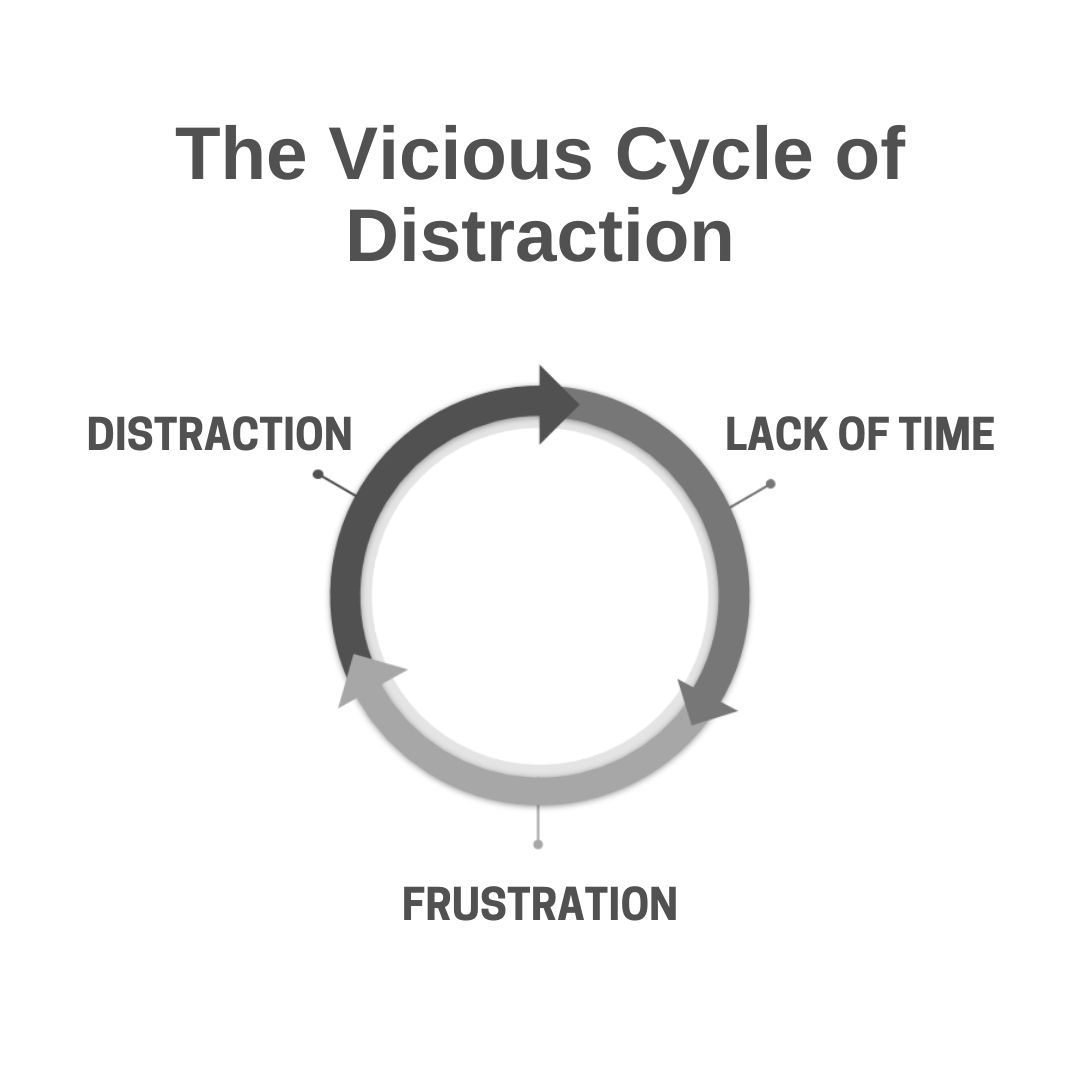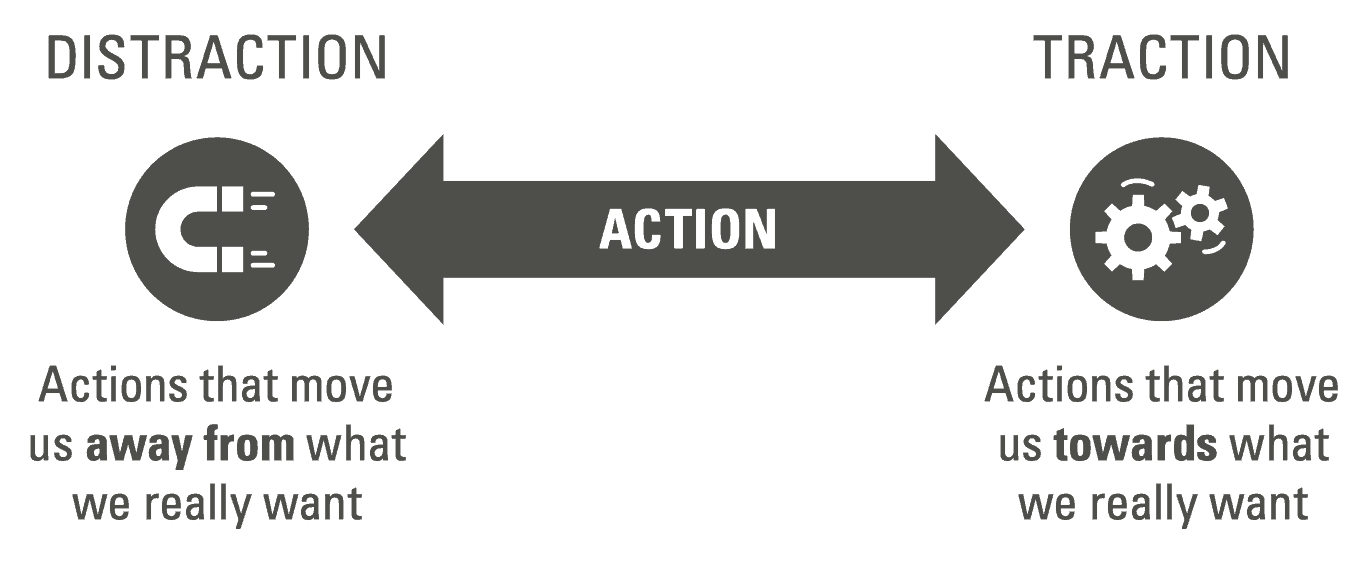People are always saying “there aren’t enough hours in the day” to get stuff done. And yet research suggests that the average working American has four hours of leisure per day.
If we have so many hours to play with every day, why do so many of us feel like we don’t have time to accomplish our big goals?
A lack of time is not the problem–it’s not why we fail to accomplish what we want to do. The real problem is the vicious cycle of distraction.
As I discuss in my book Indistractable, we spend hours upon hours each day distracted by pseudo-work like checking email unnecessarily, having too many meetings, and corporate politicking. We allow ourselves to be constantly distracted by notifications. All that wasted time just pushes us further into distraction.
But the good news is that anyone can break out of this cycle–you just have to understand how it works.
The time crunch is what you see on the surface, but it’s only the tip of the iceberg. Beneath the time crunch, there’s a massive ocean of overwhelm and frustration. And at the bottom of that sea of bad feelings is the real problem.

Here’s how the vicious cycle of distraction works
You start your day overwhelmed by your mile-long to-do list. But instead of diving into the most important task on your list, you tell yourself it’s okay to check email for a quick second. Then you check social media, reply to Slack channels, get a snack, read the news–you know, just to get yourself “ready for the day.”
These tasks all feel like things you’ll have to do at some point, so you convince yourself it’s all right to prioritize them before diving into the work you’re putting off. Eventually you realize you still haven’t worked on the most important tasks of the day.
Now you’re starting to feel frustrated. To escape the uncomfortable feeling of frustration, you look for a quick task to tick off your list, except often the quick task doesn’t take just a minute. (It’s easy to fall victim to the “planning fallacy,” or the tendency to think things will take less time than they do.) Soon you realize you’re off track again, and that further frustration just fuels the cycle as you use distraction to avoid emotional discomfort.
How to escape the cycle
If uncomfortable emotional states are the real reason we procrastinate, then the way out of the cycle is to have tools ready to deal with that discomfort in a healthier manner.
Remember, you can’t call something a distraction unless you know what it’s distracting you from. Plan how you want to spend your time. Only by setting aside a specific time in your schedule for “traction”–the actions that draw you toward what you want in life–can you escape “distraction.”

For this reason, a schedule is more important than a to-do list. That’s why I recommend using a schedule maker to plan out your day. Look at your schedule as a game or puzzle. The pieces of the puzzle are the time blocks you’ll allocate to turn your values into time. Like in Tetris, the mission is to arrange and rearrange the pieces of the puzzle in order to fit them into your schedule.
Once your schedule is all set, you might also try out some techniques to help you stay focused.
It’s not a matter of not having enough time. After all, we all have the same 24 hours in a day. Spending those hours wisely and with intent is how we become indistractable.
Related Articles
- Schedule Maker: a Google Sheet to Plan Your Week
- Habit Tracker Template in Google Sheets
- The Ultimate Core Values List: Your Guide to Personal Growth
- Timeboxing: Why It Works and How to Get Started in 2024
- An Illustrated Guide to the 4 Types of Liars
- Hyperbolic Discounting: Why You Make Terrible Life Choices
- Happiness Hack: This One Ritual Made Me Much Happier

